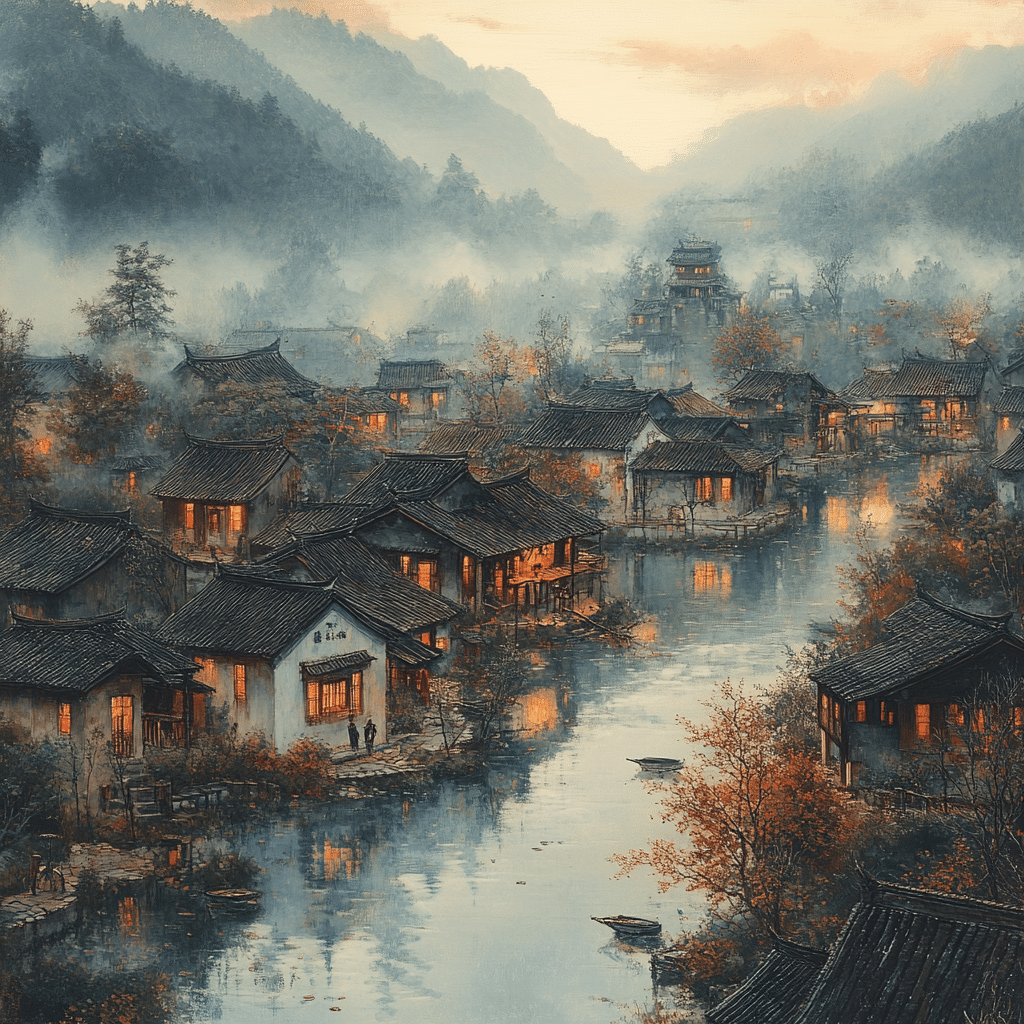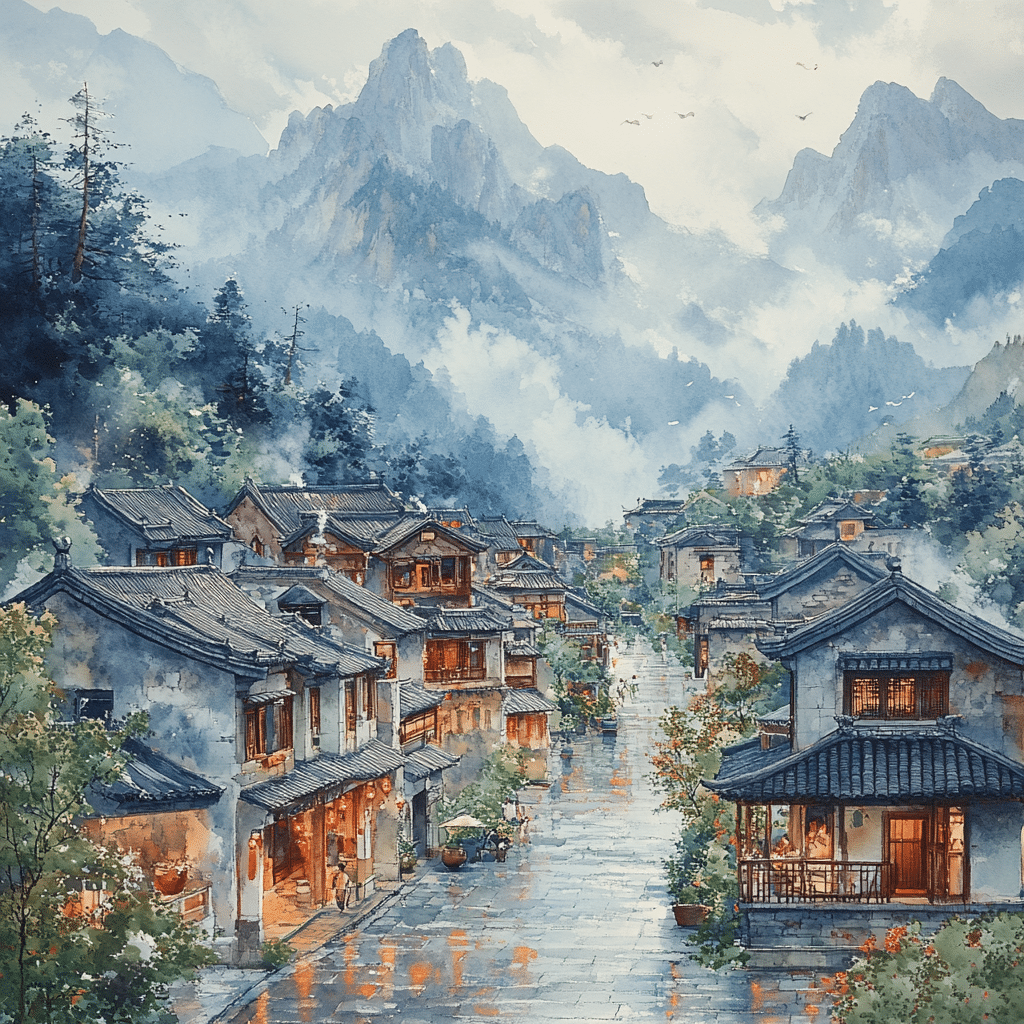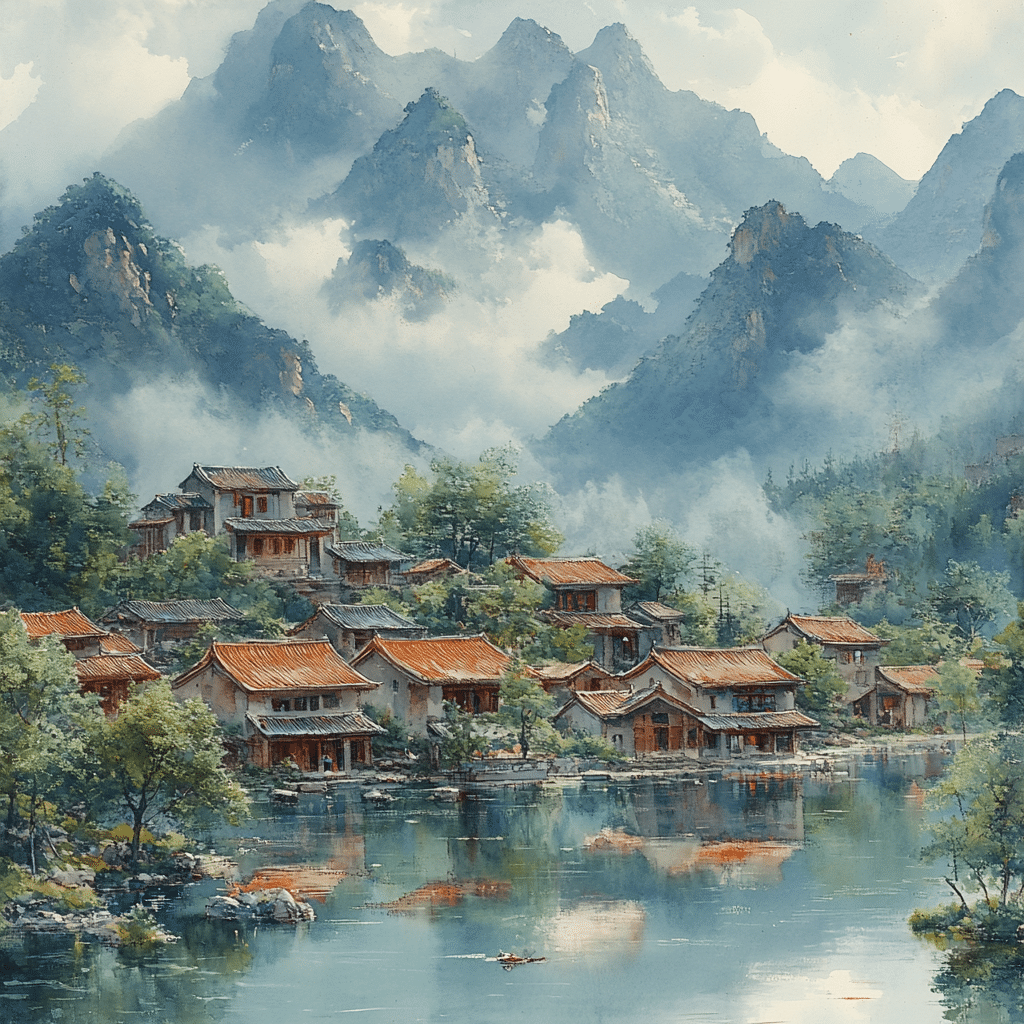Unveiling the Vibrancy of Chinese Villages
When you think of a Chinese village, you might picture a serene landscape dotted with rice paddies and ancient houses. While that image holds true, the reality is a lot richer and more complex. In fact, these villages are bustling hubs where history, innovation, and cultural richness intertwine. With around 1 million Chinese villages spread across the country, each boasts a unique flavor that adds to China’s diverse tapestry. Now, let’s dive into some astonishing discoveries that illustrate the dynamic spirit of these communities.
As we explore Chinese villages, we uncover hidden architectural gems, progressive agricultural practices, and vibrant communities that tell their own stories. Each village acts as a microcosm, reflecting the broader societal shifts and challenges that China faces today. The advancements made by these communities can fascinate anyone interested in culture and innovation. So, without further ado, let’s delve into some standout discoveries that are reshaping our understanding of rural China.

Top 5 Remarkable Discoveries in Chinese Villages
Innovations Making Waves in Rural Development
Chinese villages aren’t just about preserving the past—they’re also at the forefront of agricultural innovation. For instance, in Daowei, smart farming techniques have redefined how villagers approach their crops. Strategies like soil sensors and drone monitoring have significantly boosted yields and streamlined farming practices. It’s fascinating to see technology helping to improve food security while making labor less intensive.
Moreover, the revival of traditional indigo dyeing by the Miao people aligns ancient practices with modern fashion trends. Collaborations between Miao artisans and contemporary designers not only help promote sustainable fashion but also preserve time-honored techniques. It’s a shining example of how a Chinese village can serve as a bridge between past and present.
As rural areas adopt innovative approaches, the blend of ancient wisdom and modern tech can lead to sustainable community development. These initiatives can inspire similar efforts in other parts of the world, showcasing the adaptability and resilience found in Chinese villages.

The Future of Chinese Villages: A Blend of Tradition and Modernity
The more we explore Chinese villages, the clearer it becomes that they embody a blend of history and modernity. This unique synergy allows communities to adapt time-honored practices to tackle contemporary challenges, demonstrating their resilience and creativity. As villages continue to evolve, their stories remind us of the interconnectedness of cultural heritage and modernization.
Researchers and travelers alike uncover insights that extend beyond China’s borders, revealing global lessons about preserving cultural identities while embracing innovative strategies. As China’s rural landscape transforms, these Chinese villages will not only play a crucial role in their local environment but also as beacons of human creativity and perseverance. Their rich narratives offer inspiration for generations to come, showcasing that the past and future can coexist beautifully in the landscapes of rural China.
The Hidden Wonders of a Chinese Village
Fascinating Findings in the Chinese Village
Exploring a Chinese village can feel like stepping into a living museum. You might stumble upon ancient temples that date back centuries, offering breathtaking architecture and a glimpse into traditional practices. Interestingly, these locales often provide a rich backdrop, much like the cultural hype you’d find discussing the bold and beautiful cast in contemporary media—not just about looks, but the stories interwoven through time. If you’re lucky, you might just discover some local gems, like crafting techniques passed down through generations, akin to how urban legends breathe life into our communities.
Nature’s Bounty and Historical Oddities
Did you know that many Chinese villages are often nestled within stunning landscapes? The breathtaking views can captivate anyone, evoking awe reminiscent of moments that unfold in a movie like Casper 1995. Imagine a tranquility where one can contemplate nature’s goodness, almost like finding a well-hidden treasure. Moreover, these villages could surprise you with local wildlife as peculiar as the creature featured in cien pies. History enthusiasts would also be delighted to discover ancient artistic expressions preserved on village walls, much like uncovering a long-lost edition of revolver news detailing forgotten eras.
A Tapestry of Cultural Riches
Besides architecture and nature, the tales spun by villagers often touch on their daily lives, painting a vivid picture that’s hard to forget. Stories told over a warm bowl of noodles can echo the candidness of shannon sharpe skip bayless, dropping insights about life’s unexpected twists. Delving deeper, you might come across unusual customs or even video snippets that capture poignant moments from locals, similar to the classic christine chubbuck video. Each finds and fact reveals another layer of life in the village, highlighting that within these tucked-away corners of China lies a wealth of knowledge waiting to be uncovered.
In a world where we often chase the mainstream, taking the time to explore a Chinese village promises an adventure filled with surprises just waiting to astound. So, gear up for an extraordinary journey and discover what these quaint places truly have to offer, all while possibly running into someone like eric hecker, who might share an anecdote or two about the treasures they’ve found!

What is a Chinese village called?
A Chinese village is called an administrative village or simply a village, referred to as 行政村 (xíngzhèngcūn) or 村 (cūn) in Chinese.
What are the names of villages in China?
The names of villages in China vary widely, as there are around one million of them, and each village typically has its own unique name often based on geographical features or historical significance.
What is considered a village in China?
In China, a village is defined as a clustered settlement, usually larger than a hamlet but smaller than a town, with a population generally ranging from a few hundred to a few thousand folks.
How big is a Chinese village?
The average size of a Chinese village is about 916 people, typically made up of 7 to 10 clans and around 50 to 100 families, forming a close-knit community of roughly 500 people.
What is a Chinese town called?
A Chinese town is often referred to as 市 (shì) in Chinese, which means a larger or more developed area compared to a village.
What are urban villages in China?
Urban villages in China are areas within cities that started as rural villages but have since been surrounded by urban development, often leading to unique living conditions and vibrant neighborhood dynamics.
What is the most traditional village in China?
The most traditional village in China can vary by region, but villages like Huangliang Village in Anhui Province are often highlighted for their preservation of ancient customs and architecture.
What are other names for Chinatown?
Chinatown is often known by other names like “Chinese district” or simply “the Chinese community,” which reflects the cultural and social hubs for Chinese heritage in different cities around the world.
What is the abandoned village in China?
The abandoned village in China that often comes to mind is the village of Fengdu, which is known for its ghost town status and has drawn attention for its lost history and eerie remnants.
What are Chinese neighborhoods called?
Chinese neighborhoods are called 社区 (shèqū) in Mandarin, which refers to community areas in urban settings where families live close together and share resources and activities.
Are there still villages in China?
Yes, there are still plenty of villages in China, with around one million existing today, showcasing a rich tapestry of rural life across the country.
What is China town also known as?
Chinatown is also known by terms like “Chinese quarter” or “Chinatown district,” signifying areas predominantly populated by Chinese immigrants and their businesses.
What is village life like in China?
Village life in China can be quite communal, with a focus on agriculture, traditional practices, and close relationships between families and neighbors. It often involves a slower pace of life compared to city living.
What is the Chinese secret to long hair?
The secret to long hair in China often revolves around traditional practices like using herbal rinses, avoiding harsh chemicals, and maintaining a balanced diet rich in nutrients.
What is the Chinese name for village?
The Chinese name for village is 村 (cūn), a term that denotes rural living spaces in the broader context of family and community.
Are there still traditional villages in China?
Yes, there are still many traditional villages in China, some of which have preserved ancient customs, architecture, and lifestyles that reflect the country’s cultural heritage.
What is the most expensive village in China?
The most expensive village in China is often cited as Wuzhen in Zhejiang Province, famous for its picturesque canals, luxury accommodations, and tourism appeal.
What are the 31 states in China?
China is divided into 31 provinces and regions, including well-known states like Guangdong, Shandong, and Sichuan, each with its unique identity and culture.
What villages are near the Great Wall of China?
Villages near the Great Wall of China include Jiankou and Mutianyu, both known for their scenic beauty and proximity to iconic sections of the Wall, attracting many visitors.
What are Chinese neighborhoods called?
Chinese neighborhoods, as mentioned, are commonly referred to as 社区 (shèqū), which integrates residential and community services within urban areas.
What are Chinese palaces called?
Chinese palaces are generally called 宫殿 (gōngdiàn) in Mandarin, known for their grand architecture and historical significance, often linked to emperors and dynasties.
What is Chinatown also known as?
Chinatown is also referred to as “Chinese market” in some contexts, emphasizing the commercial aspect of these vibrant communities where Chinese goods and culture thrive.
What is a Chinese style home called?
A traditional Chinese style home is commonly called a 四合院 (sìhéyuàn), which is a courtyard-style residence that reflects familial and cultural traditions within the architecture.



